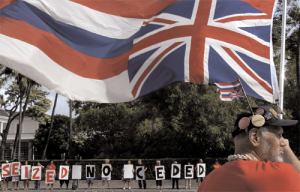Blog
News, updates, finds, stories, and tidbits from staff and community members at KAHEA. Got something to share? Email us at: kahea-alliance@hawaii.rr.com.
Bad Mauna Kea Bills Move Through Legislature
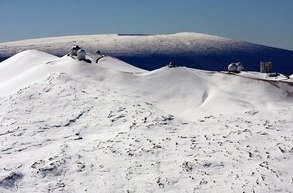
From Rob Perez’s excellent coverage of the Mauna Kea bills currently moving through the state legislature:
Two bills (HB 1174 and SB 502) giving UH authority over the 11,000-plus acres of ceded lands it leases from the Department of Land and Natural Resources have been approved by two committees each in the House and Senate, worrying environmentalists, Native Hawaiian groups and others.
The bills permit UH to regulate public and commercial uses of the land, and critics believe that authority would be broadly applied. Lawmakers call the legislation a “work in progress.”
“This is a very, very bad idea,” said Marti Townsend, program director of KAHEA: The Hawaiian-Environmental Alliance.
Critics say transferring such oversight to UH would be a huge mistake in light of the school’s poor track record on Mauna Kea and the dangerous precedent the action would set, essentially turning over responsibility for the land to its leaseholder or developer.
See full article at: http://www.honoluluadvertiser.com/article/20090222/NEWS03/902220351/1001
Kanaka Scholars Stand Up for Mauna Kea
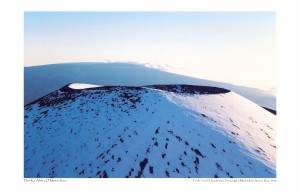 Mahalo nui loa to the dozens of Kanaka Maoli (Native Hawaiian) scholars who submitted this statement in support of protecting the sacred summit of Mauna Kea. The University of Hawaii is seeking to take over control of the summit from the Department of Land and Natural Resources because they lost the lawsuit in 2007 that held the DLNR must manage the summit for the conservation of the natural and cultural resources there, not telescope construction. For 40 years, the University of Hawaii has facilitated the destruction of the public trust lands on the summit by foreign corporations that own and operate dozens of telescopes. You can take action, too, by submitting testimony online – just click here.
Mahalo nui loa to the dozens of Kanaka Maoli (Native Hawaiian) scholars who submitted this statement in support of protecting the sacred summit of Mauna Kea. The University of Hawaii is seeking to take over control of the summit from the Department of Land and Natural Resources because they lost the lawsuit in 2007 that held the DLNR must manage the summit for the conservation of the natural and cultural resources there, not telescope construction. For 40 years, the University of Hawaii has facilitated the destruction of the public trust lands on the summit by foreign corporations that own and operate dozens of telescopes. You can take action, too, by submitting testimony online – just click here.
Kanaka Maoli Scholars Against Desecration
Statement on Mauna Kea – February 17, 2009
We declare our opposition to SB 992/HB 1174 and SB 502/HB 1370 and any other legislation bills that would transfer Mauna Kea to the University of Hawai`i (UH). These current legislative proposals would give the UH complete management authority over Mauna Kea and allow implementation of a plan that has no limit on telescope construction, would close public access to the summit, and exempt UH from public oversight in the name of development.
Mauna Kea is a sacred summit, which is already being desecrated by the existing science telescopes. The Hawai`i revised statute 711-1107 on desecration specifically states that no one may commit the offense of desecrating “a place of worship or burial,” and the statute defines “desecrate” as “defacing, damaging, polluting, or otherwise physically mistreating in a way that the defendant knows will outrage the sensibilities of persons likely to observe or discover the defendant’s action.” If this legislation passes, state legislators would be violating their own state law.
These legislative proposals also interfere with on-going litigation on the current regulations governing Mauna Kea. We would also like to remind state representatives and the general public that in the recent Third Circuit Court case regarding the management of Mauna Kea, the court ruled in favor of the Plaintiffs—Kealoha Pisciotta, President of Mauna Kea Anaina Hou; Debbie Ward and Nelson Ho, Co-Chairs of Mauna Kea Issues Committees, Sierra Club Hawai`i Island Chapter; Ali`i `Ai Moku, Paul K. Neves of the Royal Order of Kamehameha I, Moku of Mamalahoa Heiau Helu `Elua; and Clarence Ku Ching, individual Native Hawaiian Practitioner—and against the UH and the state Board of Land and Natural Resources (BLNR) for violation of the regulations protecting Mauna Kea as a conservation district. This lawsuit is currently on review before the Intermediate Court of Appeals (ICA) after the University appealed the lower court ruling against them. Though the University only recently withdrew its appeal from the ICA, counterclaims that go to the fundamental merits of this issue remain before the ICA.
Besides blatant desecration, and interference in on-going litigation, the negative environmental effects are numerous. As noted in the Testimony of the Plaintiffs regarding this legislation, two reports by the State Auditor have found that UH’s misuse and the BLNR’s failed oversight is “inadequate to ensure the protection of natural resources, and neglected …the cultural value of Mauna Kea.” Their report further stated that the University’s Institute for Astronomy “focused primarily on the development of Mauna Kea and tied the benefits gained to its research program,” and that its focus on telescope construction has been “at the expense of neglecting the site’s natural resources.” Also, in 2005, an Environmental Impact Statement required by federal court order found that the cumulative impact of telescope activities on Mauna Kea has had a “substantial, adverse, and significant” impact.
The current proposals also violate the land claims of the Hawaiian nation. These legislative attempts to transfer a portion of the Hawaiian Kingdom Crown and Government Lands of which Mauna Kea is a part, is in direct contravention of the Hawai`i State Supreme Court’s holding in OHA v. Housing and Community Development Cororation of Hawai`i, 2008. The Hawaii Supreme Court barred the transfer of this land base by the state. If this legislation passes, state legislators would be violating the state Supreme Court ruling.
This exploitative venture proposed by this legislation must be stopped because the entire scheme promotes the ongoing violation of the sacred summit of Mauna Kea; it would be irresponsible and bad public policy, as well as a continued abuse of state power.
J. Leilani Basham, Ph.D., Assistant Professor, Hawaiian Studies, University of Hawai`i at West O`ahu
Kamanamaikalani Beamer, Ph.D., Mellon-Hawai`i Postdoctoral Fellow, Kohala Center
Maenette K.P. Ah Nee-Benham, Ed.D., Dean of Hawai`inuiakea School of Hawaiian Knowledge, University of Hawai`i, Mānoa
Kealani Robinson Cook, Ph.D. Candidate, Department of History, University of Michigan
J. Noelani Goodyear-Ka`ōpua, Ph.D., Assistant Professor, Political Science, University of Hawai`i at Mānoa
Lisa Kahaleole Hall, Ph.D., Assistant Professor, Women’s Studies, Wells College
Sydney Lehua Iaukea, Ph.D., Mellon-Hawai`i Postdoctoral Fellow, Kohala Center
Kū Kahakalau, Ph.D., founder and director of Kanu o ka ‘Āina New Century Public Charter School
Lilikalā Kame`eleihiwa, Ph.D., Professor, Kamakakūokalani Center for Hawaiian Studies, University of Hawai`i at Mānoa
Val Kalei Kanuha, Ph.D., M.S.W., Associate Professor of Sociology, University of Hawai`i at Mānoa
Kēhaulani Kauanui, Ph.D., Associate Professor, Anthropology and American Studies, Wesleyan University
Brandy Nalani McDougall, Ph.D. Candidate, English, University of Hawai`i, Mānoa
Noenoe K. Silva, Ph.D., Associate Professor, Political Science, University
of Hawai`i at Mānoa
Ty Kawika Tengan, Ph.D., Associate Professor, Anthropology and Ethnic Studies, University of Hawai`i at Mānoa
Lani Teves, Ph.D. Candidate, Program in American Culture, University of Michigan
Haunani-Kay Trask, Ph.D., Professor, Kamakakūokalani Center for Hawaiian Studies, University of Hawai`i, Mānoa
Liza Keanuenueokalani Williams, Ph.D. student, New York University
Defend the Sacred Summit of Mauna Kea
Your help is needed right now. Lobbyists for the University of Hawaii, backed by powerful foreign telescope-developers, are pushing hard to take control of Mauna Kea’s public trust resources and override the conservation laws currently barring further development on our sacred summits. If successful, they will use this authority to write their own rules, approve their own permits, and shut-out the public. Public trust resources cannot be protected if the developers are allowed to police themselves.
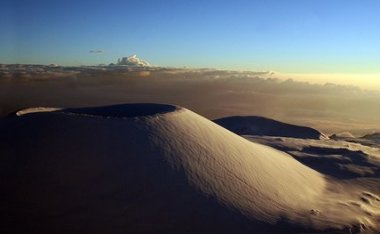
You can help stop UH’s land-grab on Mauna Kea’s sacred summit. After 40 years of mismanagement, tell the State Land Board and the Legislature that enough is enough!
“The University’s lobbyists will say anything to get their way. I heard them tell Legislators they had community consent. I am from the community and tell you what, they have nothing of the sort.” — Kukauakahi Ching, Native Hawaiian Practitioner.
Our sacred summits — Mauna Kea and Haleakala — are protected by law as conservation districts. These are public trust ceded lands–Hawaiian lands–held by the state in trust for the people of Hawaii. Yet, today Mauna Kea’s public lands are exploited by foreign corporations and the University, who are profiting from telescope activities on the summit at the public’s expense.
“The rent from the foreign telescope-owners is 30 years past due–they have paid only $1 a year to misuse Mauna Kea. If the state had been collecting the $50 million dollars a year from these foreign telescope-owners, like we suggested to them years ago, we would not have these budget shortfalls now. Remember, $50 million in 1 year is $100 million in just 2 years. They owe the people of Hawaii for 30 years of back rent. How dare they suggest to short-change the taxpayers now.” –Kealoha Pisciotta, President Mauna Kea Anaina Hou.
Forty years of uncontrolled telescope construction has desecrated cultural sites, contaminated the ground above the primary aquifer, and destroyed 90% of the endemic Wekiu’s habitat. Today, developers are vying to build two new telescopes (along with roads, parking lots, office buildings, and gift shops) on undeveloped habitat around the summit area. One of them — owned by the California Thirty Meter Telescope Corporation — is larger than all the current telescopes combined and will bulldoze the last pristine peak near the summit.
The only thing stopping them is the law. That is why the University is working hard to overturn the laws that currently protect our sacred summits and limit telescope construction. Two courts of law and two state audits have already found that the telescope industry violated the state and federal laws meant to protect Mauna Kea. The only way their future telescope construction plans can go forward is for the University and the telescope developers to change and exempt themselves from these protective environmental laws.
This latest bid to take over Mauna Kea has two fronts:
1. Pressure the Land Board to adopt an illegitimate management plan that limits public access, dictates religious ceremony, and allows UH and telescope developers to pocket public money,
2. Lobby the Legislature to pass one of four bills that will hand-over authority for managing Mauna Kea to the primary developer of the summit, the University of Hawaii.
All of it comes down to the University’s same, long-sought goal: make it easier to exploit Mauna Kea for money. The latest proposal on the table would allow the University to restrict public access (including how and when Hawaiians may worship at the sacred summit), pocket all the money made on Mauna Kea, and exempt themselves from public oversight. This is a public policy and legal nightmare!
“The University wants to gate the road to Mauna Kea–the road was paid for by taxpayers, it’s a public road. The University wants to require Hawaiians to get a permit to worship–Mauna Kea belongs to Ke Akua, they cannot lock the people out of the temple. Even if Hawaiians could get a permit, it would mean they couldn’t bring their non-Hawaiian friends and ohana to ceremony. This is discrimination! Who is the University to say who can and cannot worship?” — Paul Neves, Alii Ai Moku, Royal Order of Kamehameha I.
Your voice can help preserve the sacred temple and delicate ecosystem of Mauna Kea. Take action now to tell the Legislature and the Land Board that Mauna Kea is still not for sale.
The Old Wheel that Worked
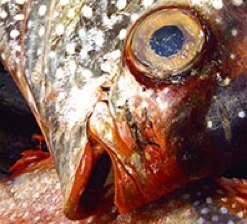 Kauai-based journalist Joan Conrow has written an excellent piece featuring Uncle Isaac Harp and his efforts to fundamentally change Hawaii’s broken system of fisheries management.
Kauai-based journalist Joan Conrow has written an excellent piece featuring Uncle Isaac Harp and his efforts to fundamentally change Hawaii’s broken system of fisheries management.“We need to stop figuring out how to be a new wheel and go back to the old wheel that worked,” Harp says. “We need to get back into ahupua‘a management. It’s not that complicated.”
Read the full article at: http://honoluluweekly.com/cover/2009/02/woe-fish/
Dead Female Humpback found in Kekaha
Female humpback whale calf will be buried at the Pacific Missile Range Facility (PMRF), perhaps appropriate–since PMRF is the place where much of the high intensity sonar activity in Hawaii is centered. The Navy 20 years ago placed sonar devices on the ocean floor off the west coast of Kauai to detect and track underwater activity.
Maybe we can count this one against the 20 serious injury or mortality ‘takes’ for seven species of marine mammals the Navy requested a few years ago. Sigh.
From the Associated Press:
Officials are conducting a necropsy on a dead humpback whale calf that washed ashore in western Kauai this week.
A veterinarian, National Oceanic and Atmospheric Administration officials and the Hawaii Pacific University Marine Mammal Response Team arrived on Kauai on Tuesday to determine how the whale died. A Kauai cultural practitioner met the group and conducted appropriate cultural practices over the remains. NOAA said the whale is 17 feet long and is female. The cultural practitioner is expected to return to conduct ceremonies for the whale, and the remains will be buried on site at the Pacific Missile Range Facility. A tour boat captain spotted the dead whale in the vicinity of Kokole Point in Kekaha at about 8:45 a.m. Monday.
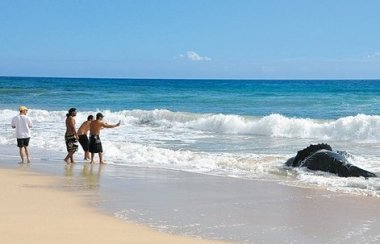
Tightening the Grip of the State
From our intern, Koa Luke:
Unfortunately, this is something that has been severely abused; no programs or land from these ceded/seized lands was ever created or given to the descendants of the Hawaiian Kingdom. Instead, these lands are abused and used by the state for things such as the Honolulu International Airport and the University of Hawai’i Manoa campus where Hawaiians are sorely underrepresented in the student population.
One of the administration’s main arguments is that the 1993 has no legal standing and its writ claims the apology bill is merely symbolic. On their website, www.stopsellingcededlands.com, Kupu ’Aina correctly explains that “allowing the sale of ceded lands before those claims are resolved is detrimental because it reduces the bargaining power of the Native Hawaiian community to resolve these claims.”
Navy and WESPAC stand in way of Marine Monuments in the Pacific
Some random quotes about the opposition to marine monuments in the Pacific from “Islands Business International” a Fijian on-line newspaper.
The obstacles it cites: first the Navy, then WESPAC.
“Ironically, the most significant opposition to extending the monuments to the full EEZs of the 11 islands had nothing to do with fishing: it came from the US Navy. Even though Bush specified in a memorandum last August that the monument designation “should not limit the department of defense from carrying out its mission” in the Pacific, senior Pentagon officials expressed concern that it could lead to future restrictions on their ability to carry out their tasks. They cited lawsuits restricting the use of active sonar, which injures whales and dolphins, that arose from Bush’s designation of the Northwestern Hawaiian Islands monument two years ago. “Without the Navy, I think the monuments would have been a lot bigger,” said one environmentalist.”
But that did not prevent aggressive pushback from Pacific marine conservationists’ old nemesis, the Western Pacific Regional Fishery Management Council, a federal agency whose executive director, Kitty Simonds, has fought restrictions on fishing for three decades. Wespac is tasked with protecting the interests of fishing companies as well as insuring that these interests don’t reduce fish stocks, but it has presided over the rapid collapse of lobster stocks in the Northwestern Hawaiian Islands and a steep decline in the fish stocks of the Main Hawaiian Islands. It has even encouraged the issuance of commercial bottom-fishing and lobster-fishing permits in the National Wildlife Refuges of Baker, Howland, Kingman, Jarvis, Johnston and Palmyra, in violation of federal laws, says Jim Maragos, a veteran Fish and Wildlife Service scientist.
In Saipan, where tourism and the garment industry are in free-fall, a pro-monument petition attracted 6000 signatures and the Hotel Association and the Chamber of Commerce endorsed turning the waters around the three northernmost islands—Maug, Asuncion and Uracus—into a marine national monument. “Almost no one is able to enjoy these islands at this time,” wrote Lynn Knight, chairwoman of the association, in a letter to Bush, while monument status would “boost the local economy in promoting ecotourism”.
In contrast, the governor and most of the legislature have voiced their opposition to what they call “The Pew Monument” in language that strikingly resembles Wespac’s.
“The opposition was led by Wespac in every regard,” said Rick Gaffney, a former Wespac council member. “Without Wespac,” added Andrew Salas, a former Marianas legislator, “the opposition would have been minimal. There would have been a bit of grumbling because relations between the Marianas government and the federal government are pretty bad these days, but that’s it, because the overwhelming majority of the people support the monument.”
Wespac is under investigation by the US General Accountability Office and the Inspector General of the Commerce Department for suspected illegal lobbying. In a letter to Bush that received wide publicity in Saipan, Aha Kiole, an organisation essentially created by Wespac to prevent marine reserves from being created in Hawaii, accused the president of having created the Northwestern Hawaiian Islands reserve “without the participation of the Native Hawaiian people,” all of whom feel “anger, trepidation and despair” whenever the monument “is mentioned.” Although more than 100 hearings were held on the issue over six years, the letter asserts that most Hawaiians “did not know that the Pew Foundation was planning to take three-fourths of Hawaiian lands and make it into a monument.” (In fact, the total land area of the ten-islet monument is 13 sq km, while the rest of Hawaii totals 16,635sq km).
The Marianas monument, the letter continued, “will take an integral part of the Marianas culture away from the native people—with no hope of ever getting this part of their heritage back”. Like all federal agencies, Wespac is barred from spending federal funds to lobby the legislative branches of state and federal government. The General Accounting Office, the investigative arm of Congress, and the Inspector General of the Commerce Department are currently both investigating allegations that Wespac lobbied the US Congress and the Hawaii legislature to push its pro-fishing, anti-conservation agenda, notably in creating Aha Kiole.
In Saipan, much of the political elite has ties to Wespac. The governor’s chief of staff, Ray Mafnas, is a senior, unsalaried Wespac official who collects over US$600 a day every time he travels for Wespac. Arnold Palacios, Speaker of the House, is a former member of the Wespac council. He wrote in a letter to Bush that the “loss of control over such a vast area of land and water is an assault on the traditions and culture of the islands.” The representative Speaker Palacios appointed as chairman of the House Federal Relations Committee, Representative Diego Benavente, is a former lieutenant governor who is running for governor. He engineered the approval of two He was president of the Saipan Fishermen’s Association in 2005 when it got a US$150,000 grant from Wespac to rent and equip a store to sell its members’ catch. But this past December, the Marianas Variety reported that the store had closed two months after it opened because of unexpected expenses “like utilities, rent, and salaries.”
Benavente was quoted as saying: “We ran out of money, basically.”
Valentin Taisakan, the mayor of the Northern Islands Municipality, which lies south of the three islands designated as a monument by Bush in January, also wrote to Bush in opposition to the monument. Taisakan, who lives in Saipan, received a US$90,000 Wespac grant to create a fishing base in his remote municipality, but the base never opened, according to Saipan sources. In another letter to Bush opposing the designation, Juan Borja Tudela, the mayor of Saipan, where most of the Marianas’ 65,000 people live, said the monument waters should be left under the control of Wespac, which he called “much more sensitive to the Pacific Islanders’ way of life.” Wespac’s vice-chairman, Manny Duenas, head of a fishermen’s group in Guam, went further in his own letter to Bush. “The taking of our marine resources may be construed as being no different than cattle rustling” and it would “serve as a springboard to ensure the cultural genocide of a people,” he wrote. The result of all this opposition, and of negotiations between James Connaughton, Bush’s environmental adviser, and Gov. Benigno Fitial, was a Marianas marine reserve truncated into three segments, all falling far short of the goals articulated by its proponents.”

